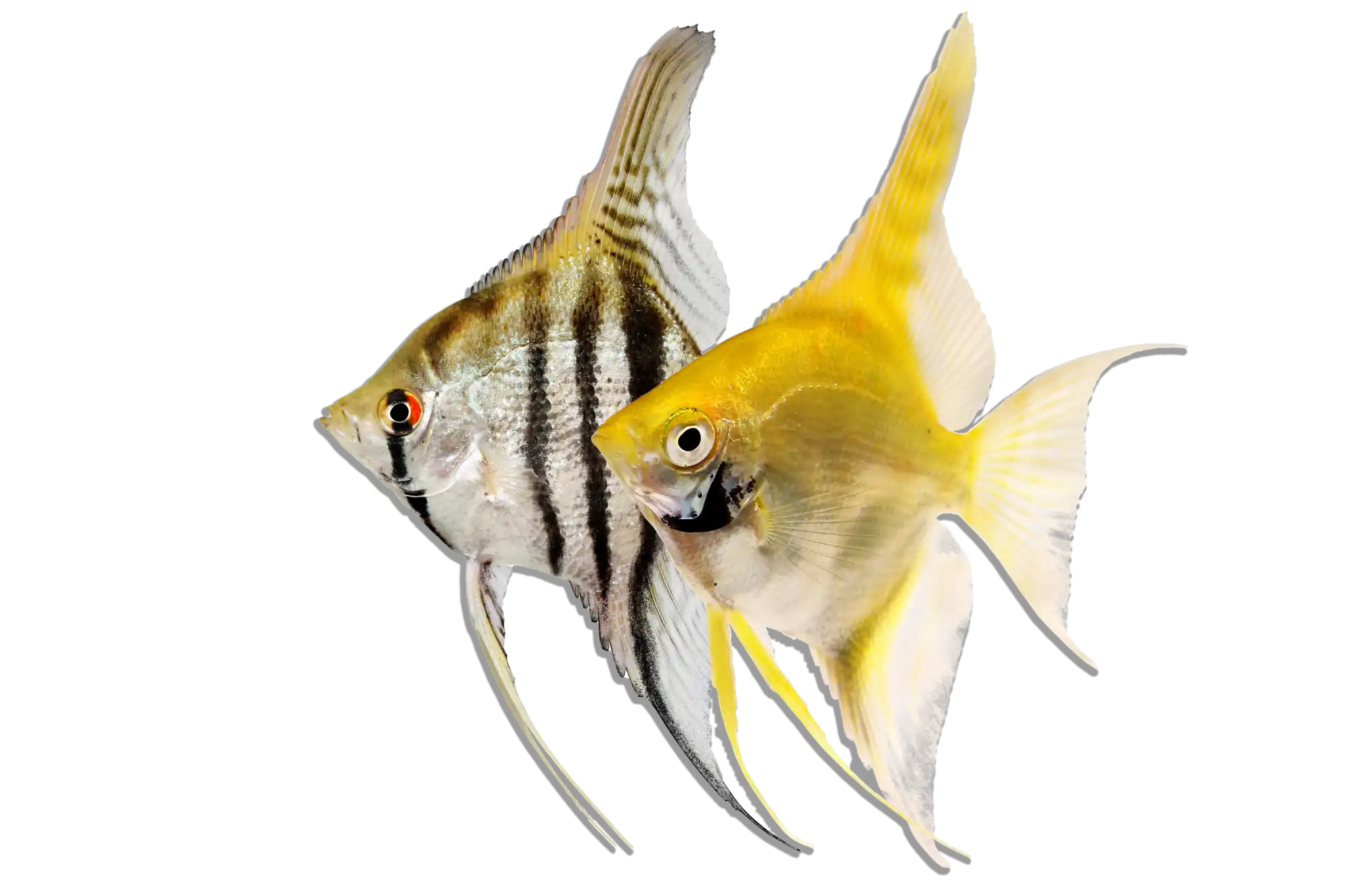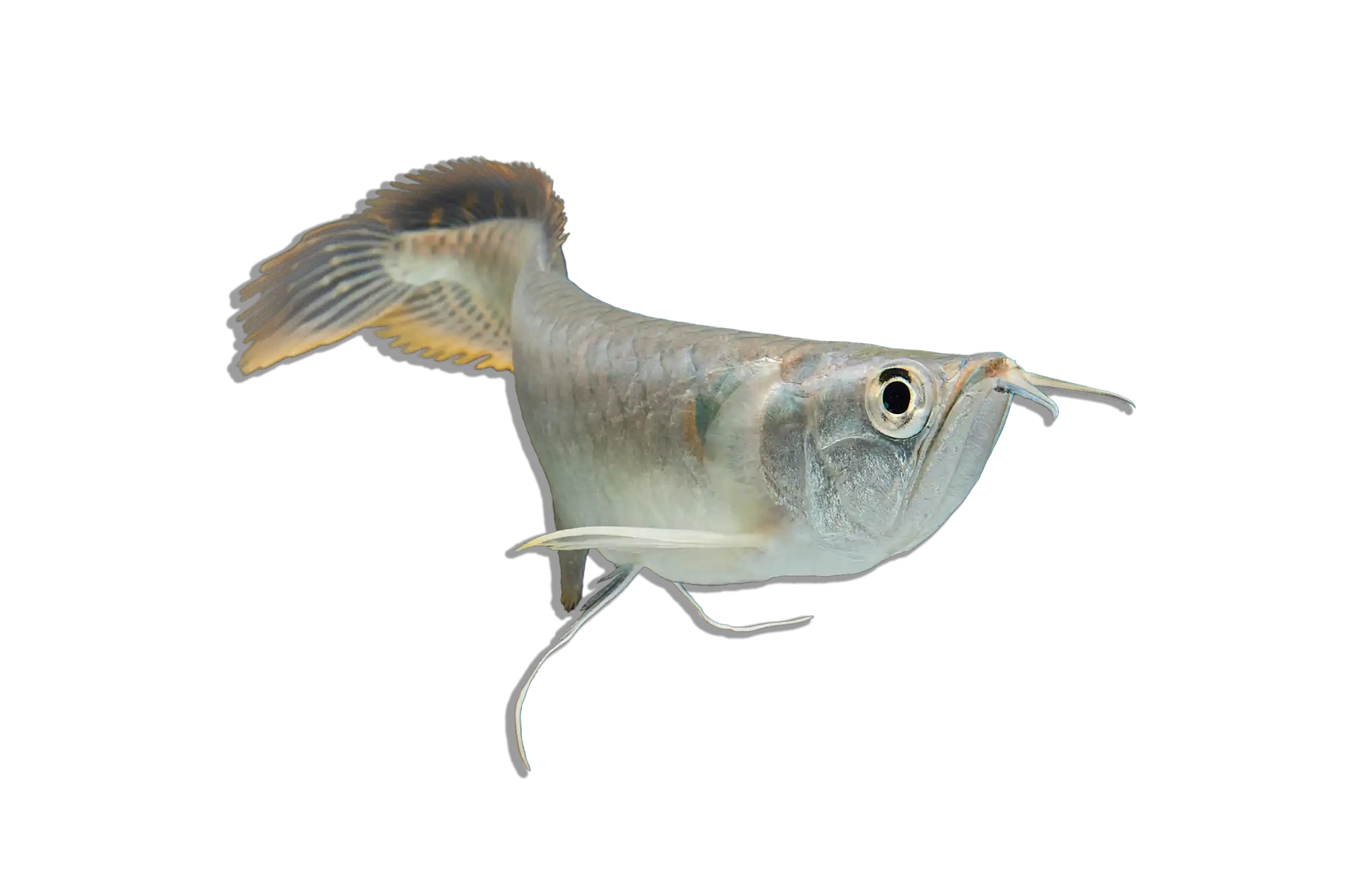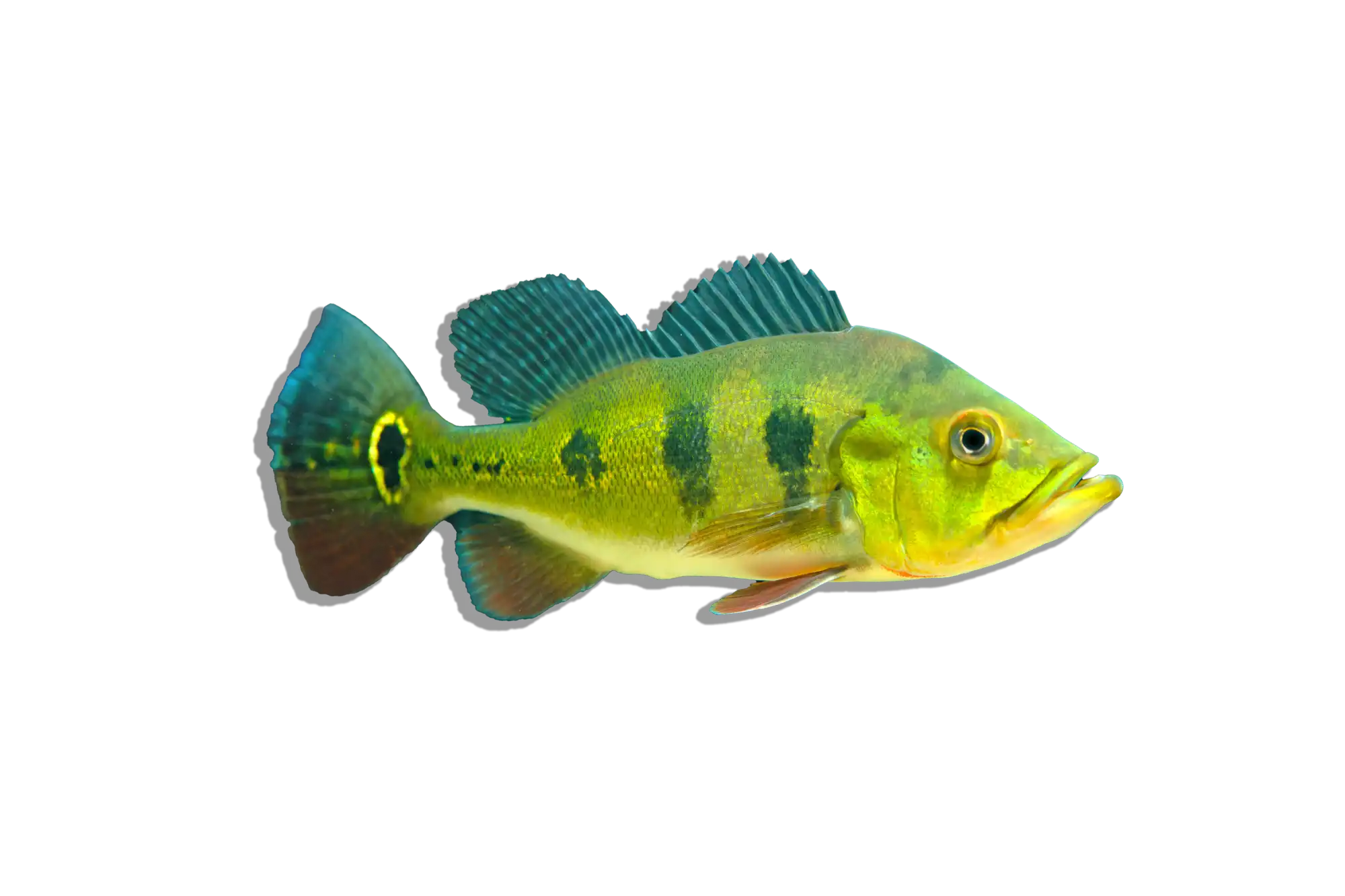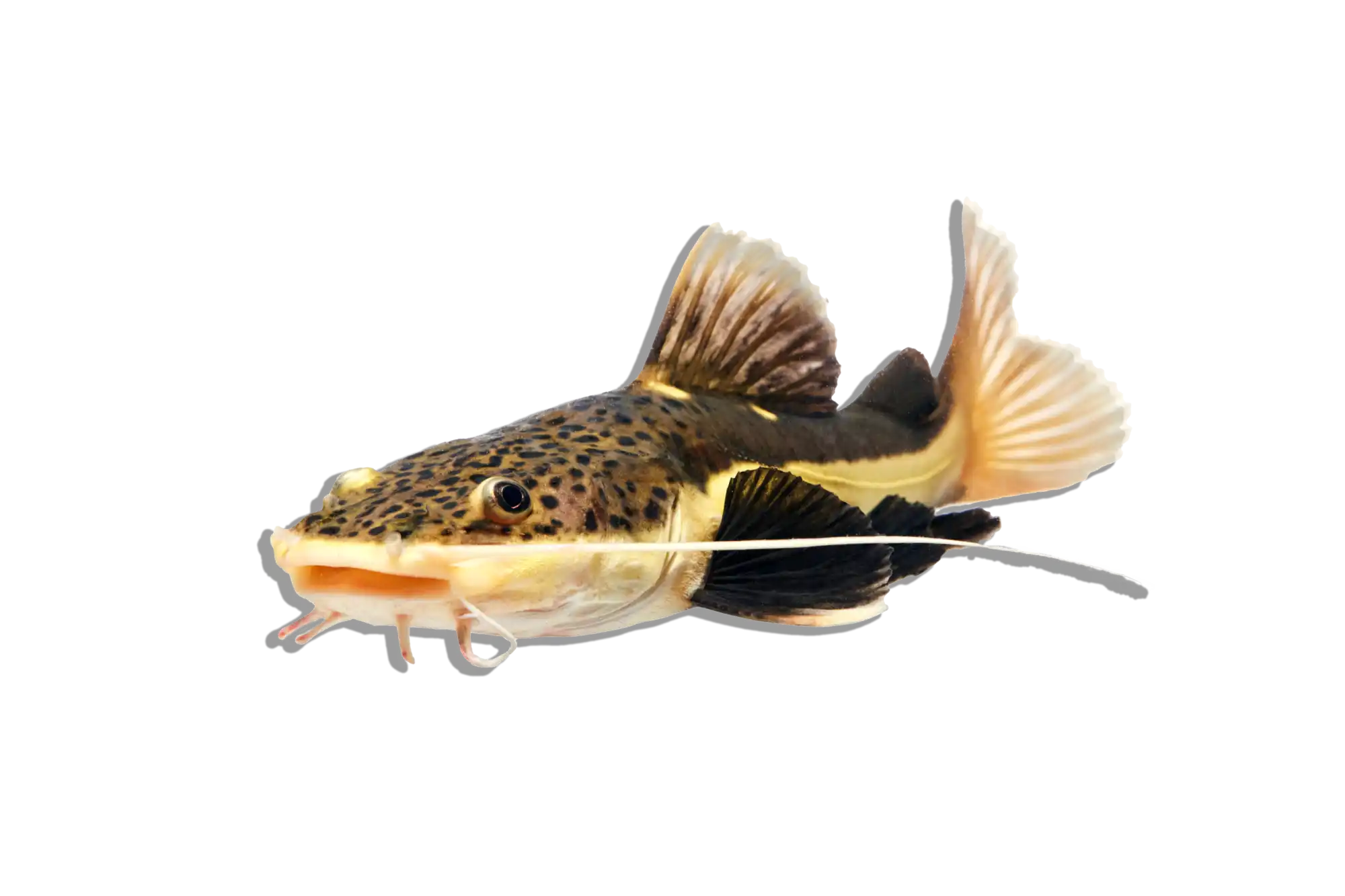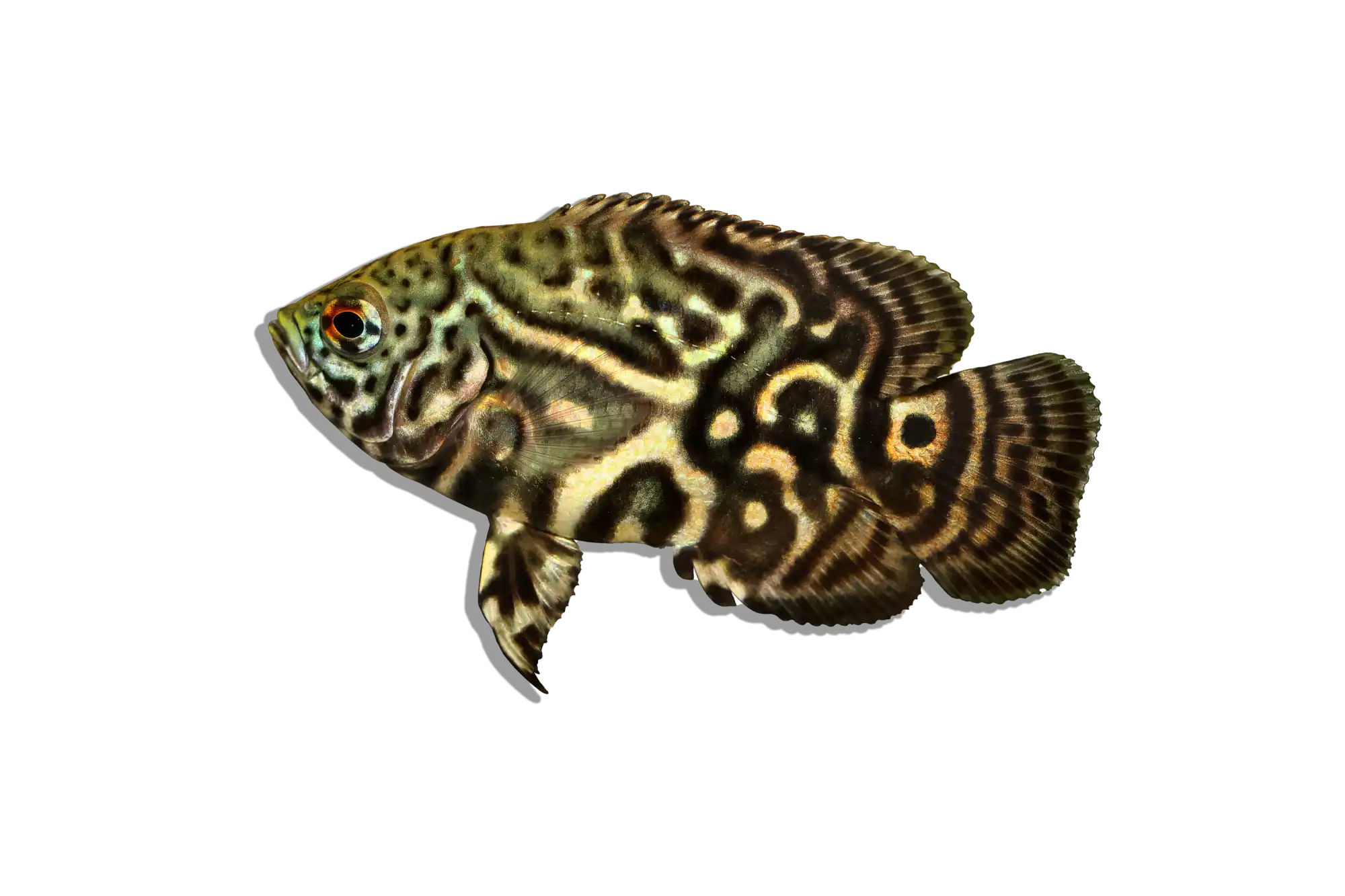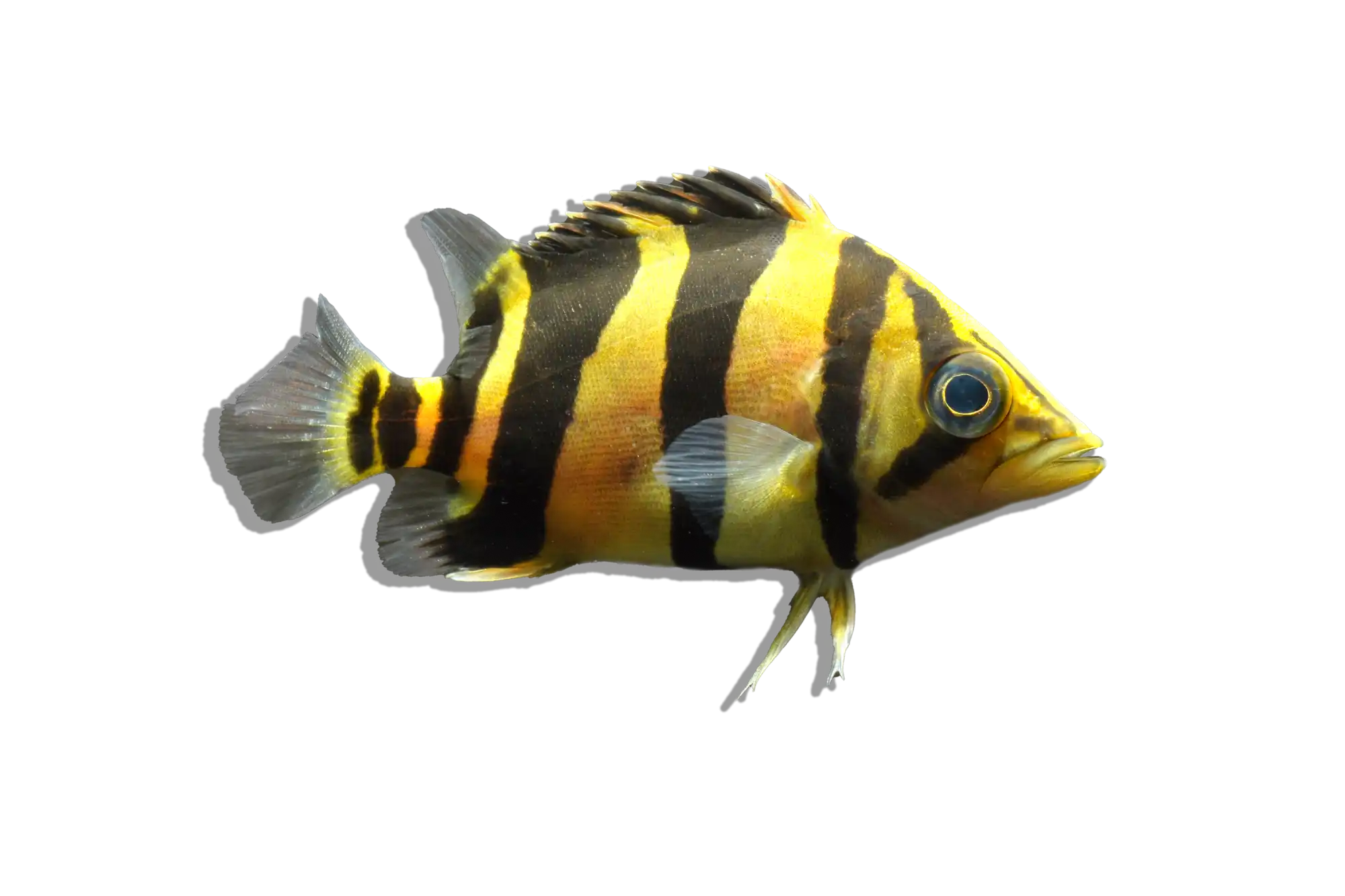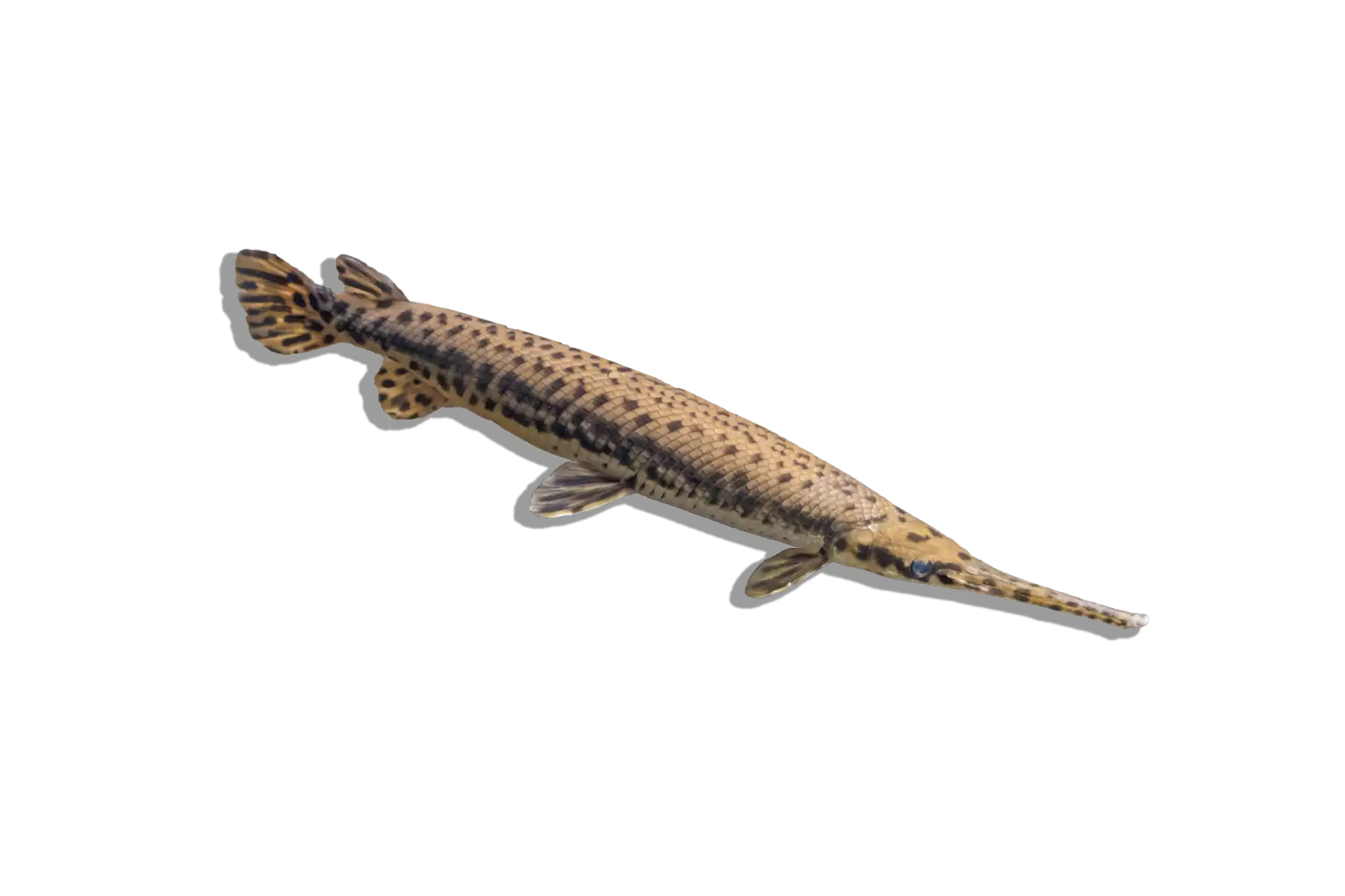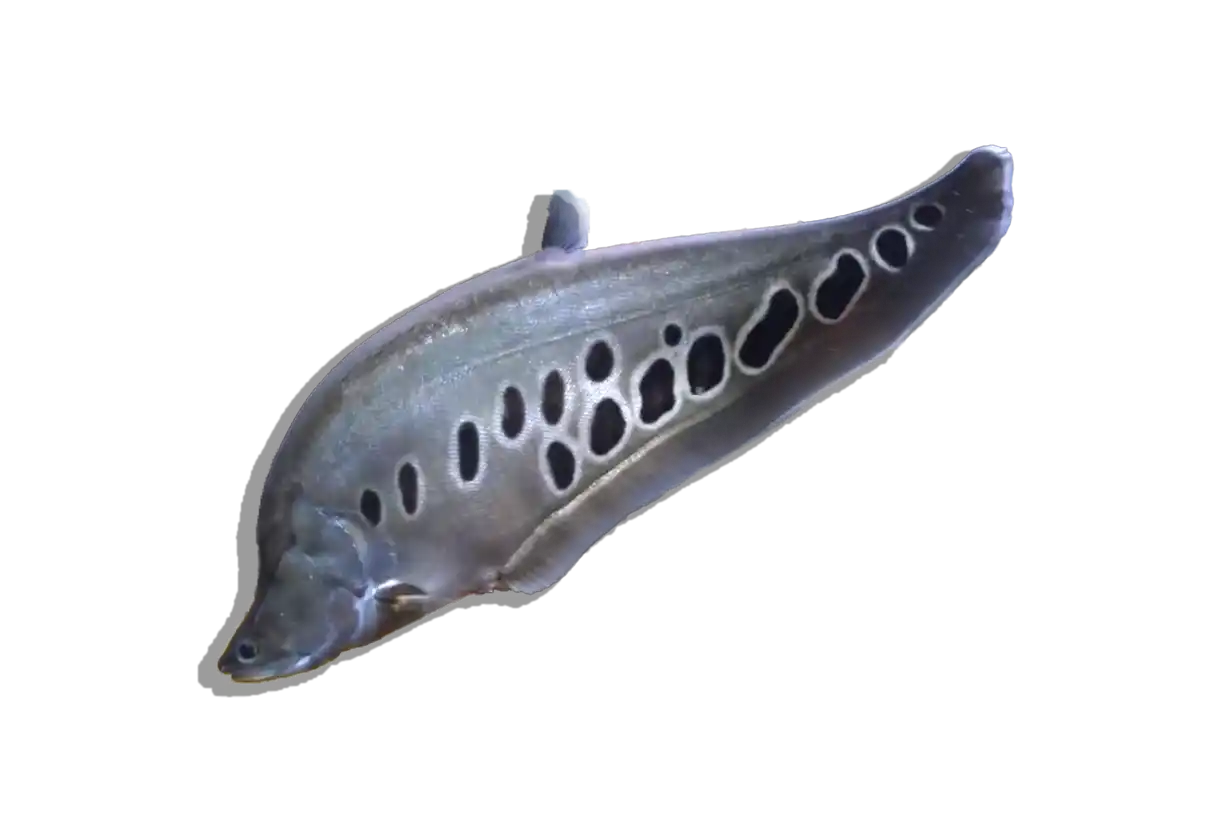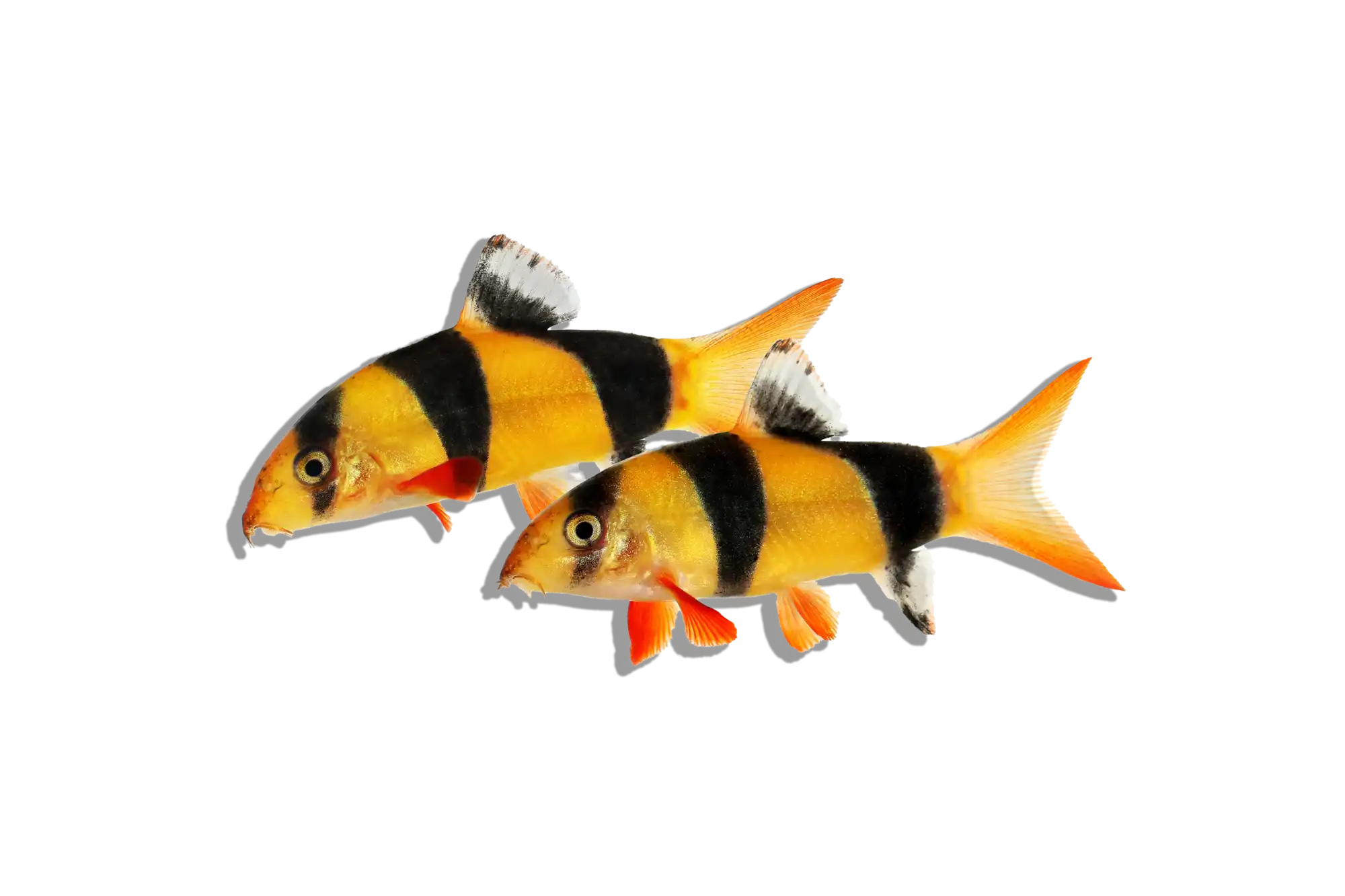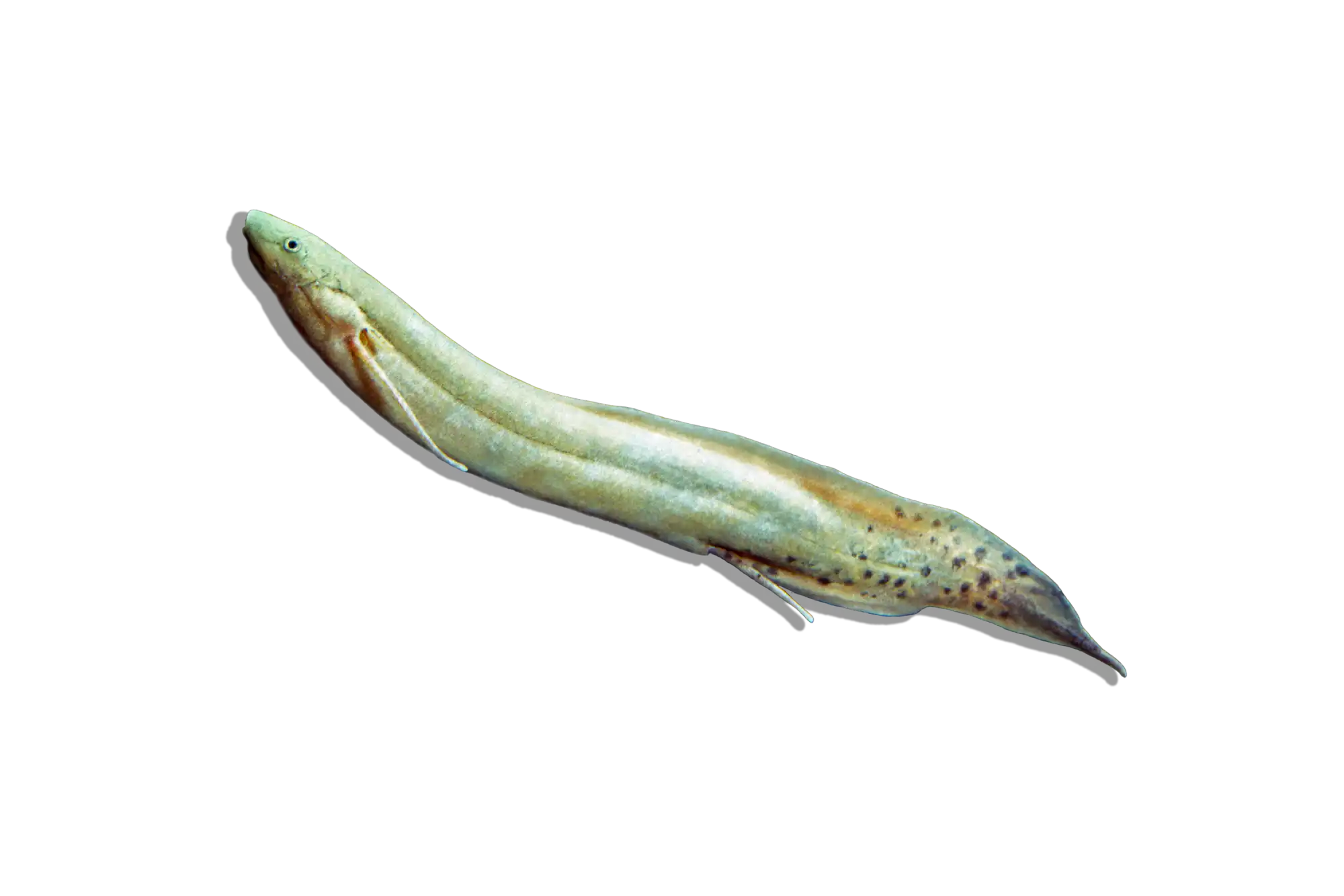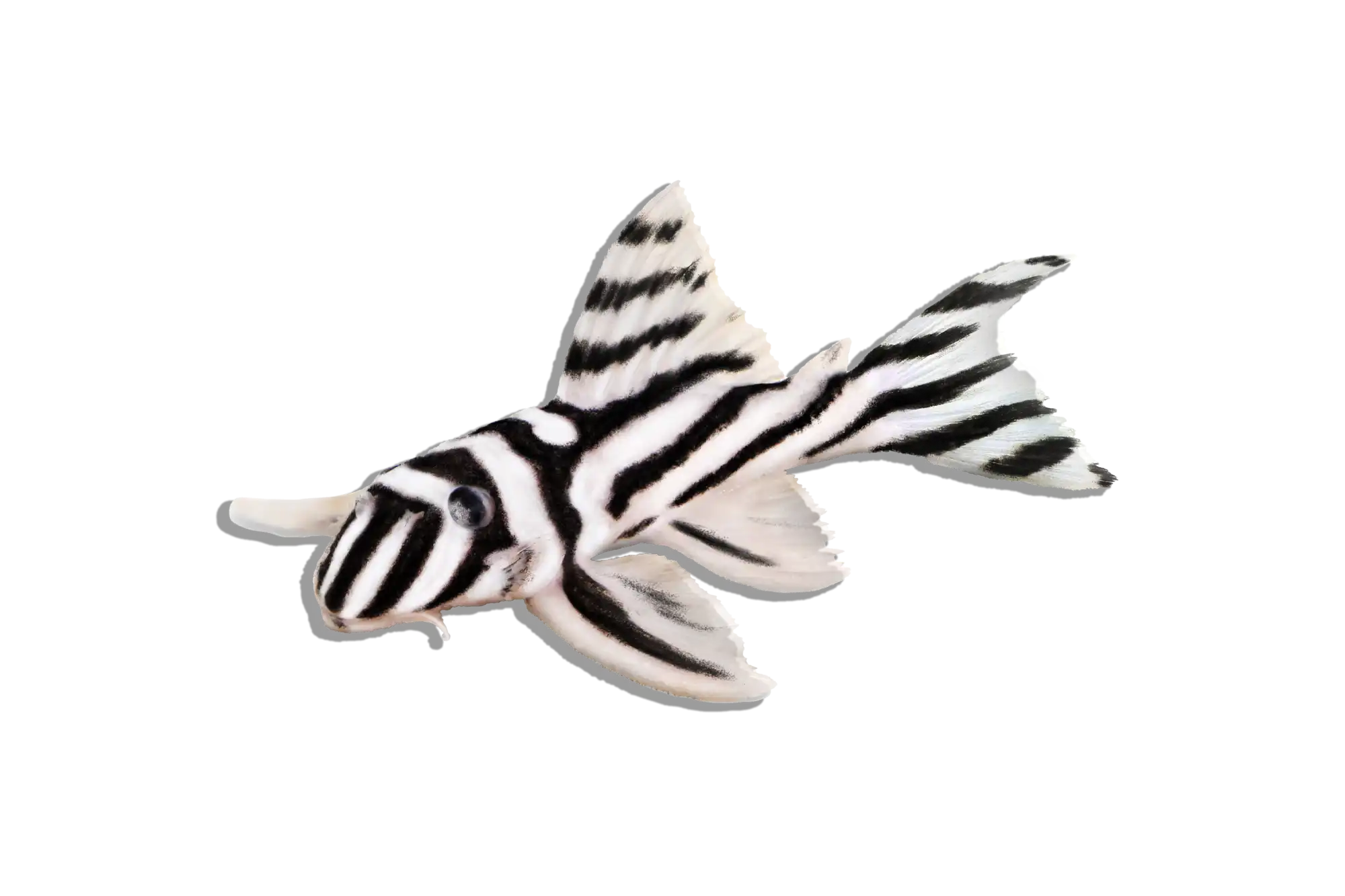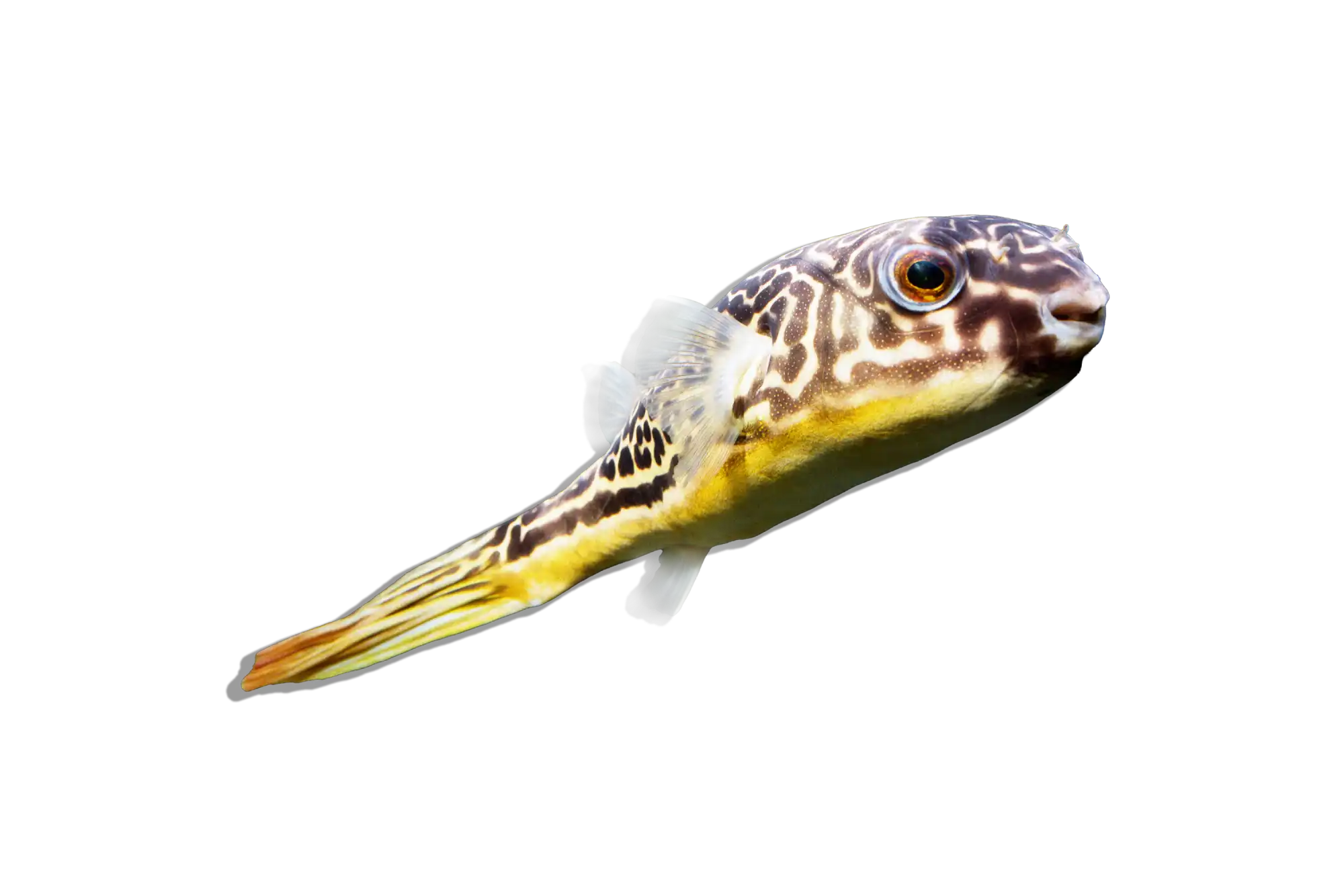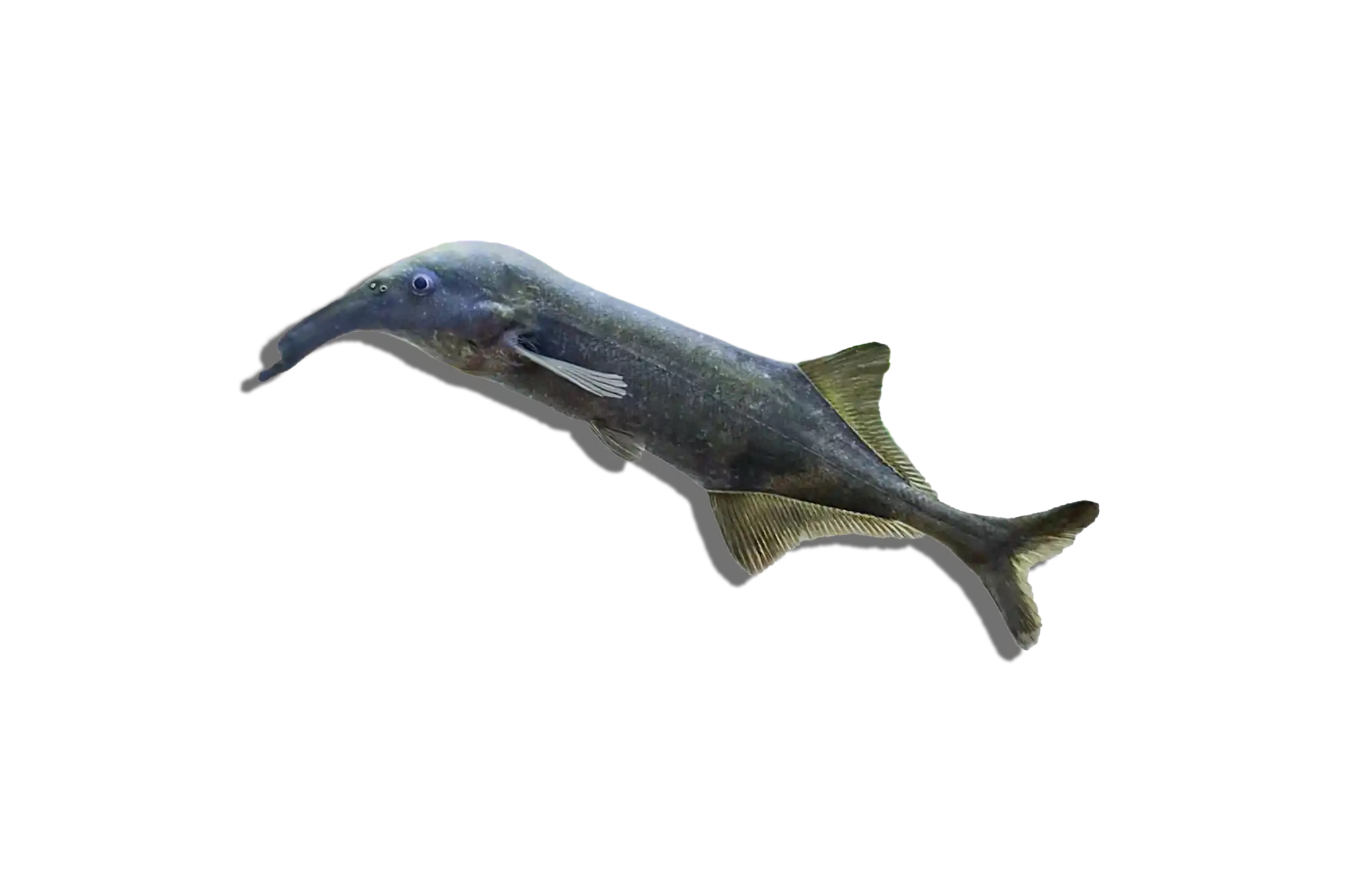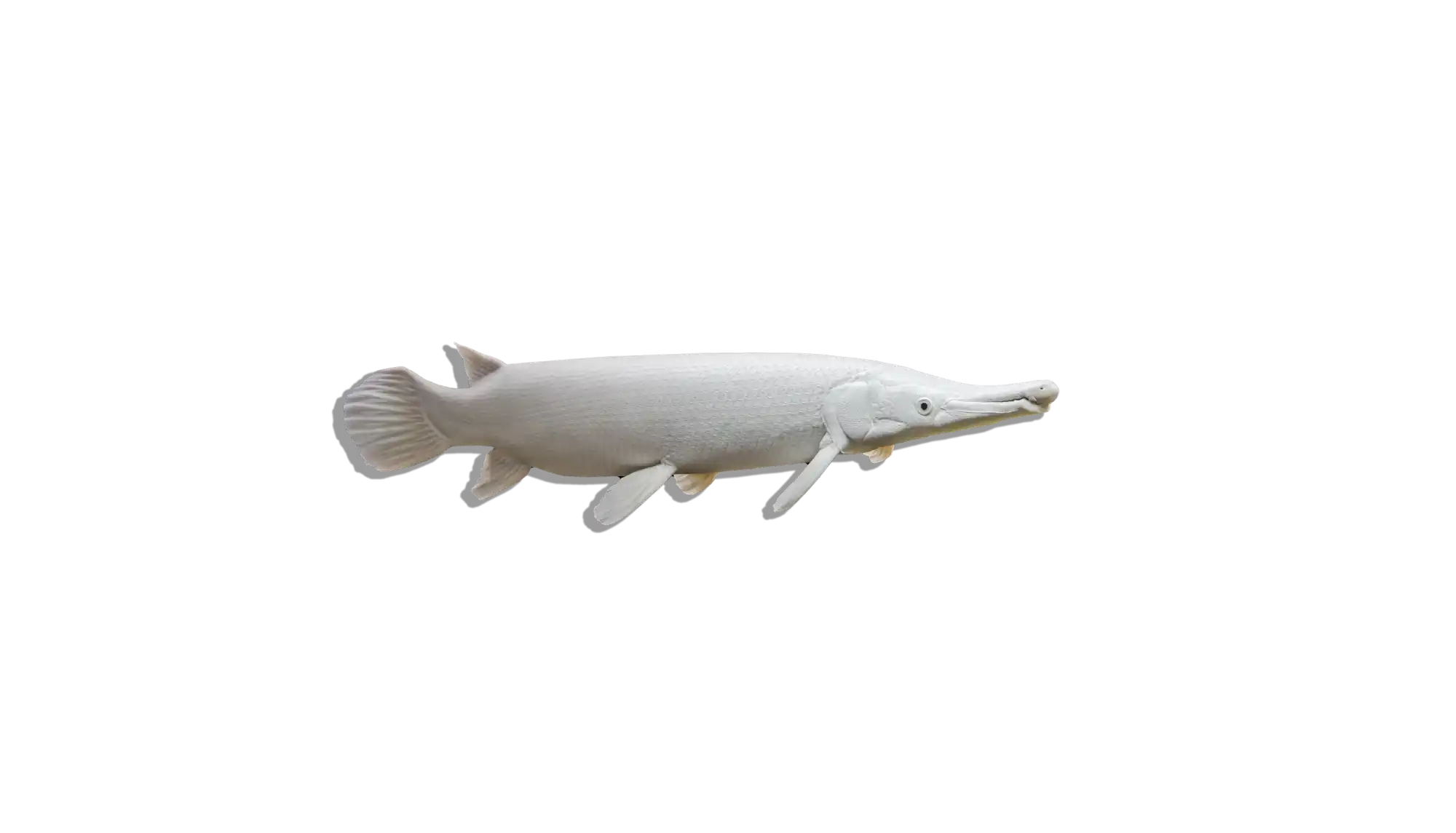Description
Common Name: Gisela’s Bichir
Scientific Name: Polypterus congicus ‘Tanzania’
Other Names: Tanzanian Congicus Bichir
Gisela’s Bichir is a rare and highly sought-after regional variant of Polypterus congicus, distinguished by its robust body, large head, and unique coloration. While standard P. congicus specimens are known for their pale yellowish-brown to golden hues, the Tanzanian variant often exhibits darker tones with more defined patterning. Like all bichirs, it has a prehistoric appearance, with thick ganoid scales, an elongated body, and multiple dorsal finlets. This species is a slow-moving ambush predator, making it an impressive addition to large freshwater aquariums.
Habitat and Distribution:
Native to Tanzania and surrounding regions, this variant of Polypterus congicus is found in slow-moving rivers, floodplains, and swampy areas. These environments have soft, muddy or sandy substrates, dense vegetation, and submerged logs, providing ample hiding spots. Like all bichirs, they possess a modified swim bladder that allows them to breathe atmospheric air, enabling survival in low-oxygen conditions.
Size and Lifespan:
Gisela’s Bichir is one of the largest bichir species, reaching up to 36 inches (90 cm) in the wild. In captivity, specimens typically grow between 24-30 inches (60-75 cm), depending on tank size and diet. With proper care, they can live for 15-25 years.
Diet and Behavior:
This species is a carnivorous ambush predator, feeding on fish, crustaceans, and insect larvae in the wild. In captivity, their diet should include high-quality sinking carnivore pellets, frozen or live foods such as chopped raw tilapia, earthworms, bloodworms, and occasional feeder fish (only from trusted, disease-free sources). They are generally nocturnal but become more active during feeding times. While not highly aggressive, they will eat smaller tank mates that fit in their mouths.
Breeding and Reproduction:
Bichirs are egg scatterers, and breeding them in captivity is challenging. In the wild, they spawn in seasonal floodplains with increased water levels and abundant food. If attempting to breed them in captivity, providing a large, heavily planted tank with soft, slightly acidic water and a high-protein diet may encourage spawning. However, there are no widely documented successful captive breeding attempts of this specific variant.
Aquarium Care and Tank Requirements:
A minimum of 250 gallons is required for a single adult, with larger tanks (300+ gallons) preferred for multiple individuals. Their ideal tank setup includes a soft sand substrate to prevent injury, driftwood and caves for shelter, strong but gentle filtration to maintain water quality, low to moderate water flow, and dim lighting with floating plants to mimic their natural habitat. A secure lid is essential, as bichirs are known escape artists.
Ideal Tank Mates:
Gisela’s Bichir is best kept with similarly sized, peaceful or semi-aggressive fish that will not fit in its mouth. Suitable tank mates include Arowanas, Datnoids, Peacock Bass, Large Loaches, Oscars, and other large bichirs. Avoid small fish, as they will be eaten, and overly aggressive species that may harass the bichir.
Difficulty Level:
Intermediate to Advanced. They require a large tank, a protein-rich diet, and proper tank mate selection to thrive.
Water Parameters:
- Temperature: 76-82°F (24-28°C)
- pH: 6.5-7.8
- General Hardness (GH): 5-15 dGH
- Carbonate Hardness (KH): 4-12 dKH
- Ammonia: 0 ppm
- Nitrite: 0 ppm
- Nitrate: <20 ppm (regular water changes required)
Additional Information:
- This variant of Polypterus congicus is highly rare and sought after in the aquarium trade.
- They require a secure lid, as bichirs are known for jumping out of tanks.
- Due to their slow metabolism, overfeeding should be avoided to prevent obesity.
Gisela’s Bichir is a truly unique and prehistoric-looking fish, making it a prized addition for advanced aquarists with the space and resources to care for a large, predatory species.

